 Biotope and Birdpia
Biotope and Birdpia

Biotope
In accordance with our theme of coexistence with nature, Advantest has established one of the largest biotopes to be created by a company in Japan, at our Gunma R&D Center, aiming to bring back to life the traditional rural landscape of the Kanto Plain.
Focusing on ponds, wetlands and streams, we have planted aquatic plants and trees that blend with the surrounding natural environment, aiming to form a network with that environment. It has grown into an ecosystem supporting diverse species of insects, birds and so forth.
The Advantest biotope is used for environmental education, enabling employees to learn about the importance of the global environment, and also as a place for communication with the local community.
∗Biotope: The word comes from the Greek words "bio" (living organisms) and "tope" (a location).
Biotope description
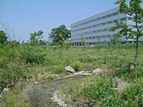
| Location | 336-1, Ohwa, Meiwa-machi, Ora-gun, Gunma Within the Gunma R&D Center site |
|---|---|
| Area | 17,000m2 (100m × 170m) |
| Vegetation |
|
∗ Ecotone: An environmental transition zone bordering on a different environment, such as the water's edge, grasslands, woodlands etc.
Biotope mechanisms
We have put in place biotope mechanisms* in 10 sites within the biotope area, to support a variety of living creatures, and have kept track of how they are being used.
∗ Biotope mechanism: piles of logs, stones etc.
1) Log biotope mechanism
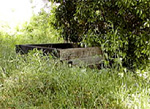
An environment created by piling logs together. The surface is dry but it is moist inside, so reptiles and insects live and lay eggs there.
- <Species observed>
-
Reptiles: snakes (eggs), Japanese grass lizard etc.
Insects: small stag beetle (larvae), assassin bug, seven-spotted lady beetle, etc.
2) Cut bamboo biotope mechanism
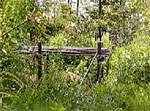
Bundles of cut bamboo sticks were put on the ground and above ground. Insects live in the bamboo and in the gap between the bundles.
- <Species observed>
-
Insects: a kind of wasp (Isodontia nigella), solitary wasp (Anterhynchium flavomarginatum micado), type of earwig (Carcinophora marginalis), etc.
3) Piled stones biotope mechanism
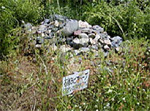
A mechanism in which large and small stones are arranged in a pile. Insects live under and in the gaps between the stones.
- <Species observed>
-
Insects: Enma cricket, Loxoblemmus campestris, Panagaeus japonicus Chaudoir, etc.
4) Sand gravel biotope mechanism
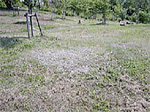
Uses fine sand. Insects live on the surface of the sand gravel.
- <Species observed>
-
Insects: Enma cricket, Pyrrhocoris sibiricus, Harpalus tinctulus, etc.
A place for relaxation
The biotope functions as a place where employees can learn about the environment, as well as a place where they can have a relaxing encounter with nature. Many employees go for a walk in the biotope during lunch breaks, observing the animals and plants. We also undertook a survey of employees regarding the biotope, and are using the results to improve biotope management. Further, we sometimes open the biotope to the public as a place for communication and interaction, holding events for the local community and so on.
Gunma R&D Center Registers with Birdpia
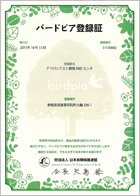
October 15th, 2011, the Gunma R&D Center (located in Meiwa-machi, Ora-gun, Gunma Prefecture) registered itself with the Birdpia activities organized by the Japanese Society for Preservation of Birds.
Birdpia is a green space for wild birds to live in a comfortable environment. The purpose of the Birdpia is to help people understand the importance of cohabitation with nature by increasing the number of the Birdpia and by facilitating the co-existence and the symbiotic relationships between the human beings and birds. Since we agree with and support this purpose, we decided to register with the Birdpia.
The facility of the Gunma R&D is surrounded by rich arboriculture, which functions as a habitat of wild birds. The property also has an extensive biotope with an area of approximately 17,000m2. Many plants and animals, including the Intermediate Egret (Ardea intermedia) listed as a Near Threatened bird in the Red List of the Ministry of the Environment in Japan, live in this biotope. When winter arrives, more than 50 wild ducks appear in the biotope and delight the eyes of our employees, as well as the primary school children and the neighborhood residents who visit the biotope.
Our objectives to fulfill our function in the Birdpia include:
- The preservation of biodiversity
- The contribution to our local community
- Ensuring the absorptive function of carbon dioxide
We will continue to maintain and manage our arboriculture and biotope and will facilitate the environmental preservation activities.
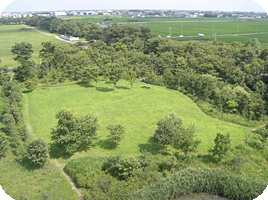
Biotope
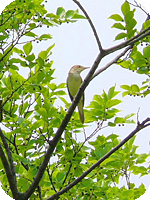
Acrocephalus arundinaceus
inhabiting in the biotope

